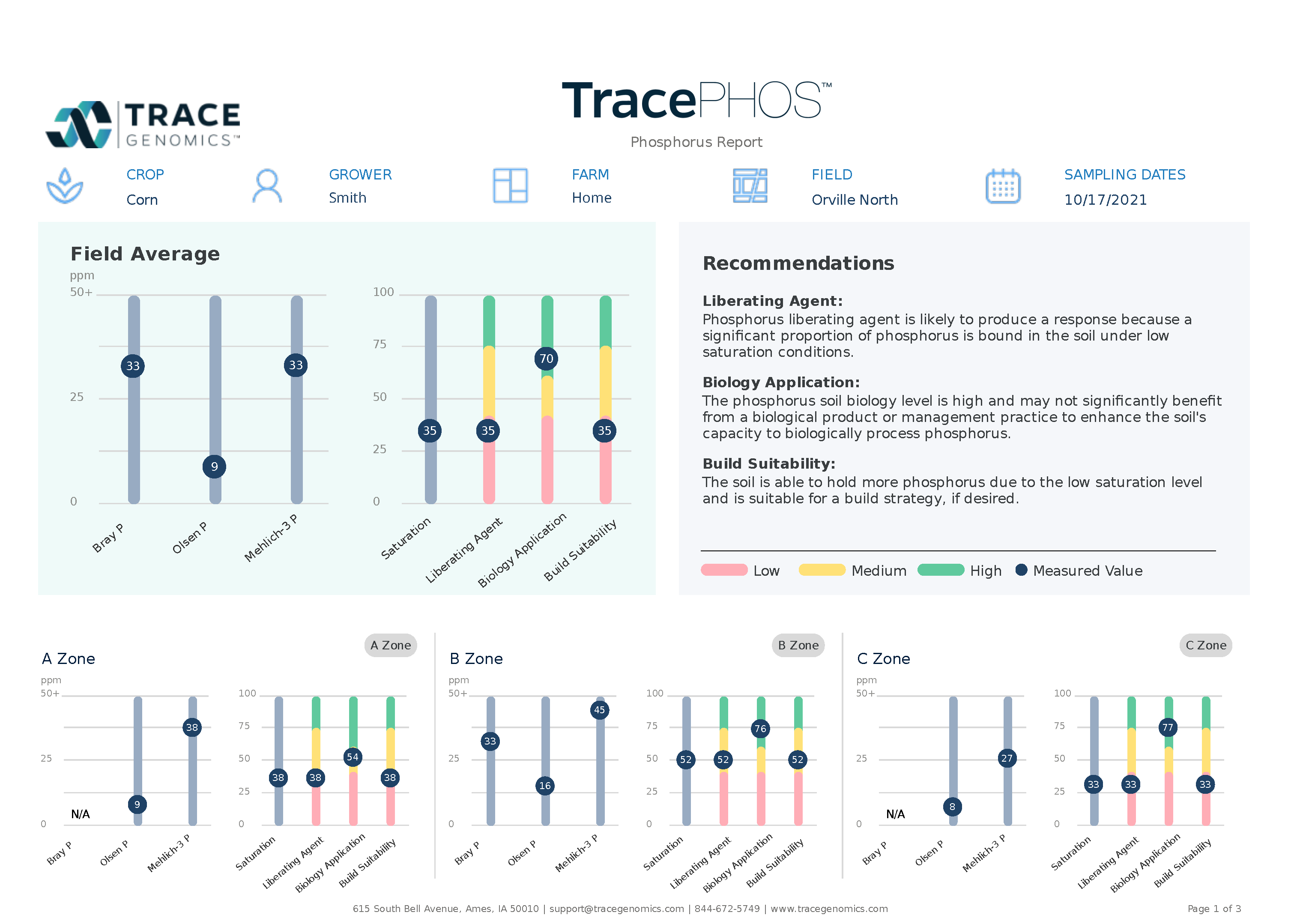Bacteria as the Baristas of the Soil: Understanding the Phosphorus Cycle
Phosphorus is an essential nutrient that plants take up from the soil in order to grow. In many cases, it is the limiting nutrient, so low levels of phosphorus mean low plant growth. Whether you’ve grown a home garden or work in commercial agriculture, you’ve probably used a fertilizer containing phosphorus to help your plants grow.
Knowing how much phosphorus to add to your soil can be difficult, but it is important. Too little, and the plants won’t thrive. Too much, and it can block plants from getting other nutrients they need (plus extra phosphorus in waterways can cause harmful algae blooms). Using diagnostic tools like TracePHOS™, farmers can decide how much and what type of phosphorus product to use.
To understand the role of phosphorus in the soil, let’s compare it to an essential nutrient for many humans: coffee. Plants can only use phosphorus that is available to them in the soil. Similarly, (most) humans only purchase coffee in the forms they can use: as a beverage or coffee grounds. Phosphorus is present in the soil in many forms, some of which can be used by plants and some of which cannot. Likewise, coffee is available in other forms that aren’t used by most humans: roasted beans, or green coffee beans.
Much like a barista grinds coffee beans and brews them into a delicious latte, there are ways the inaccessible forms of phosphorus in the soil can be turned into something that plants can use. One way is through chemical weathering. Imagine if roasted coffee beans could transform, on their own, into a hot cup of joe, but it would take a week. Not practical on a large scale, right? To speed things up, the process of weathering can be recreated by adding acid to phosphorus-containing rocks. This is done on an industrial scale to make phosphorus fertilizer.
Another way that phosphorus becomes available to plants is with the help of microscopic organisms—bacteria that are able to extract usable forms of phosphorus from larger, organic material (like grinding roasted coffee beans) and other bacteria that can pull phosphorus that is bound to the soil (like retrieving a shipment of ground coffee from the back storeroom).
Current chemical analysis of soils can measure how much phosphorus could be available to plants (ex, how many roasted coffee beans we have) but does not take into account the ability of soil bacteria to transform it. We need to know how many “baristas” are working a shift. Trace Genomics has developed TracePHOS, which combines the chemical measurement of phosphorus with the biological potential to transform the phosphorus into a form that is usable by plants.
Using TracePHOS can allow farmers to make more informed decisions about what type of phosphorus product would most benefit their soil—a fertilizer, a liberating agent, or a biological amendment. Not only can this save time and money that goes into fertilizer applications, but it also protects the environment from phosphorus pollution in waterways. At Trace, our mission is to provide farmers with data-driven, evidence based management recommendations, which is possible with TracePHOS.
If you’re looking for insights beyond phosphorus, TracePHOS is part of TraceCOMPLETE™, our total solution for understanding and managing soil health, including pathogen and nutrient management. TraceCOMPLETE not only helps you make decisions regarding phosphorus fertilizers or liberating agents, but also informs decisions on biologicals, nitrogen stabilizers, seed selection, seed treatment and in-season disease-management.
About the author: Dr. Tuesday Simmons is the Science Writer at Trace Genomics. She earned her Ph.D. in Microbiology from the University of California, Berkeley, studying the root microbiome of cereal crops.





